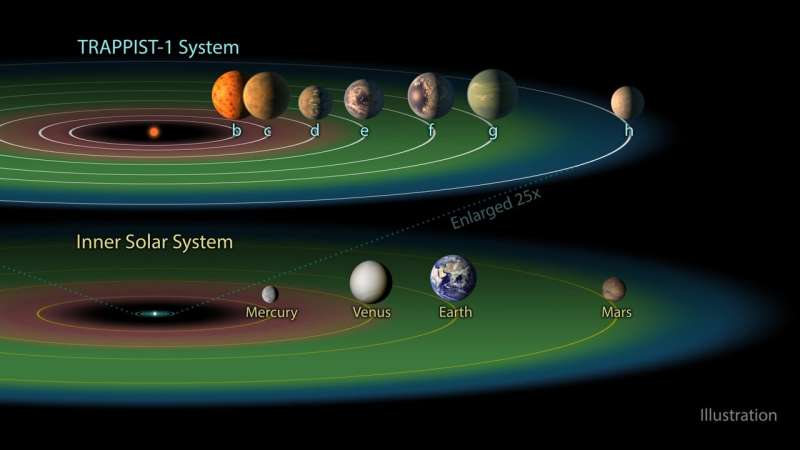
As the scientific community searches for worlds around nearby stars that could potentially harbor life, new Southwest Research Institute-led research suggests that younger rocky exoplanets are more likely to support Earth-like climates.
In the past, scientists have focused on planets that are not too hot or cold for liquid surface water to exist. Even within thelocks zone, planets can still be inhospitable to life. Sustaining climates requires a planet with enough heat to power a carbon cycle. The decay of the radioactive isotopes of uranium, thorium and potassium is the main source of this energy. This critical heat source can power a rocky exoplanets mantle, a slow creeping motion of the region between a planet's core and crust that eventually melts at the surface. CO 2 comes from surface volcanic degassing, which helps keep a planet warm. Without mantle degassing planets are not likely to support climates like the Earth.
We know these radioactive elements are necessary to regulate climate, but we don't know how long they can last. Because planets can have more or less of these elements than the Earth, we wanted to understand how this variation might affect how long rocky exoplanets can support Earth-like climates.
It is difficult to study exoplanets. Today's technology can't measure the composition of an exoplanet's surface, much less its interior. Scientists can measure the abundance of elements in a star by studying how light interacts with the elements in the upper layers. Scientists can use the data to infer what a star's planets are made of using stellar composition as a rough proxy.
We calculated how long we can expect planets to have enough volcanism to support a warm climate before they run out of power. For the few planets we do have ages for, we found only a few were young enough for us to confidently say they can have surface degassing of carbon today.
This research combined observational data with models to understand which parameters affect an exoplanets ability to support a climate. Computational modeling and laboratory experiments will quantify the reasonable range of these parameters, particularly in the era of the James Webb Space Telescope, which will provide more in-depth characterization of individual targets. It will be possible to measure the three-dimensional variation of exoplanet atmospheres. The knowledge of atmospheric processes and their interactions with the planet will be deepened and scientists will be able to estimate whether a rocky exoplanet is too old to be Earth-like.
Exoplanets without degassing are more likely to be cold. The rocky exoplanets discovered in the TRAPPIST-1 star system are included. The simplest places to look for other Earths may be younger planets with warm climates.
More information: Cayman T. Unterborn et al, Mantle Degassing Lifetimes through Galactic Time and the Maximum Age Stagnant-lid Rocky Exoplanets Can Support Temperate Climates, The Astrophysical Journal Letters (2022). DOI: 10.3847/2041-8213/ac6596 Journal information: Astrophysical Journal Letters Citation: Team finds younger exoplanets are better candidates when looking for other Earths (2022, May 3) retrieved 3 May 2022 from https://phys.org/news/2022-05-team-younger-exoplanets-candidates-earths.html This document is subject to copyright. Apart from any fair dealing for the purpose of private study or research, no part may be reproduced without the written permission. The content is provided for information purposes only.